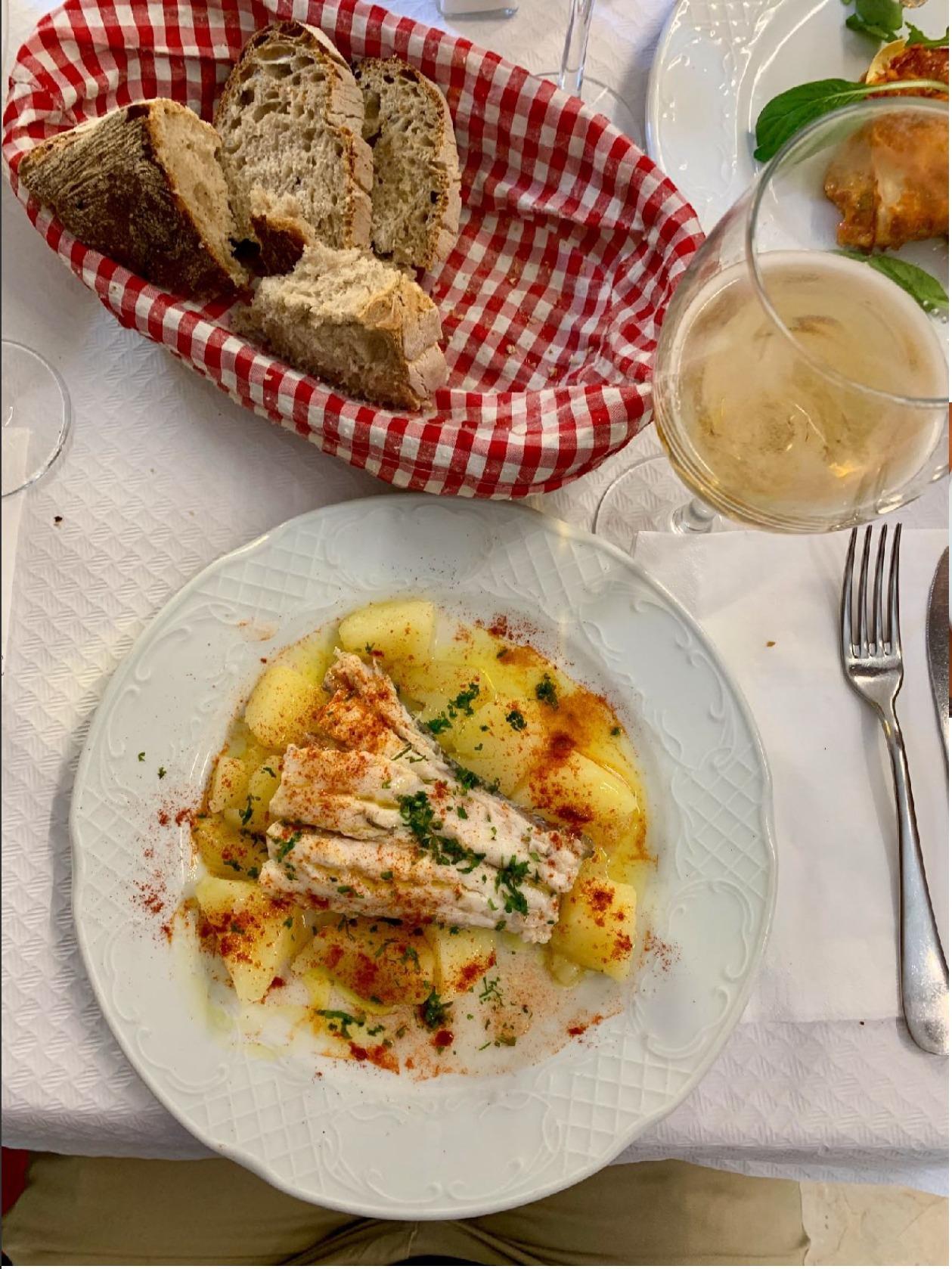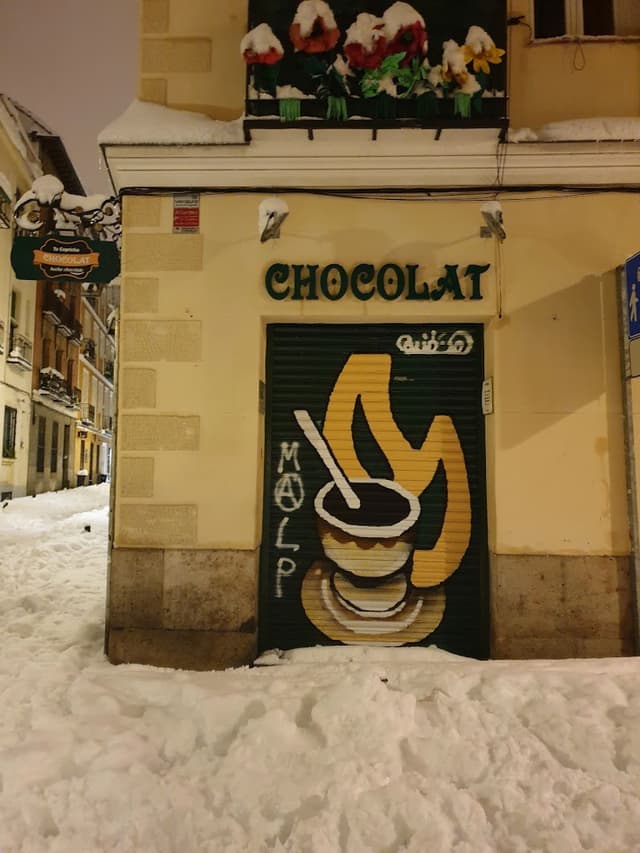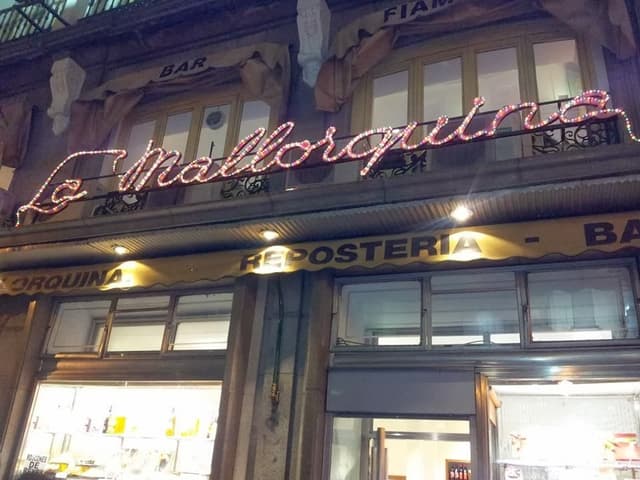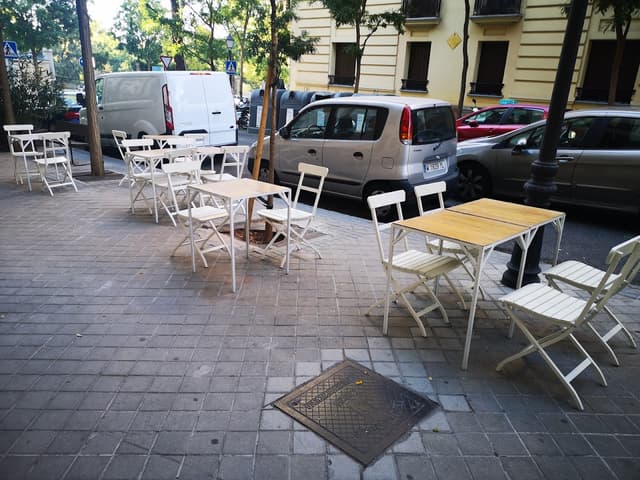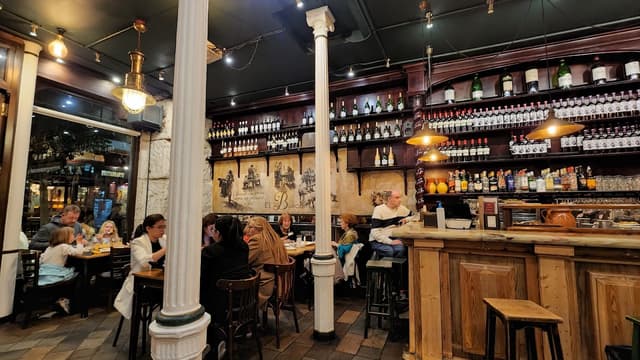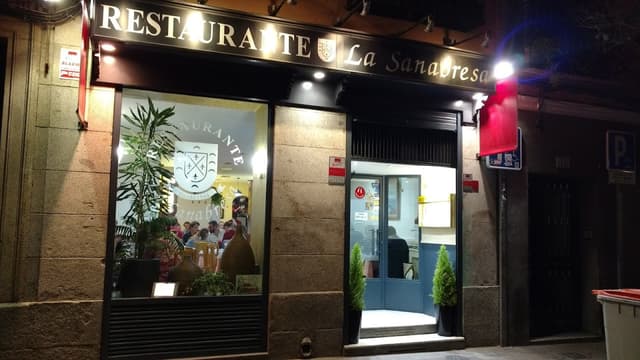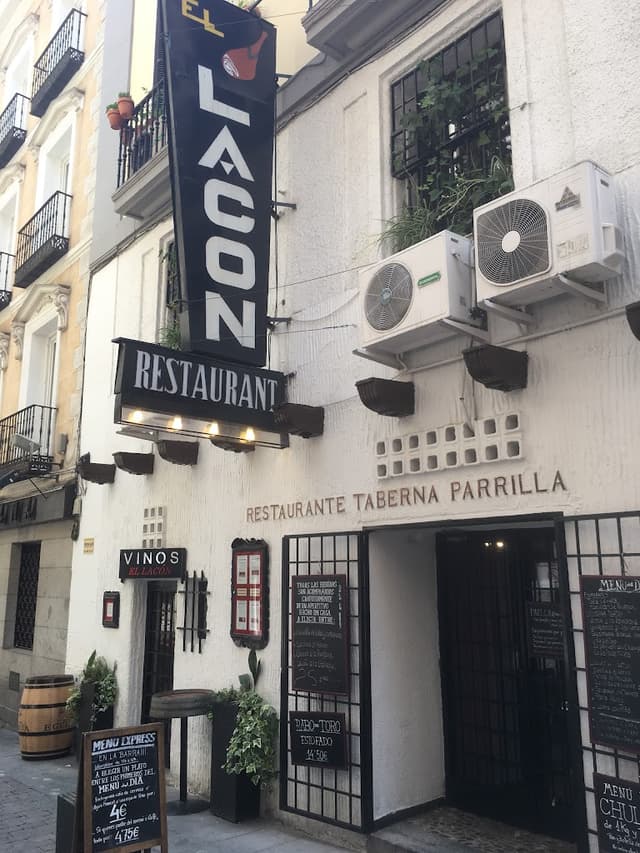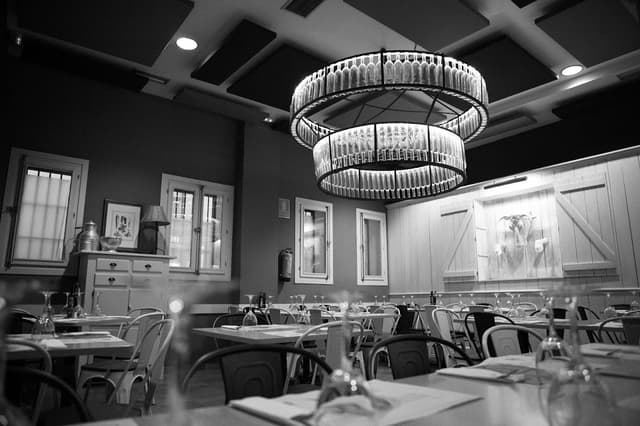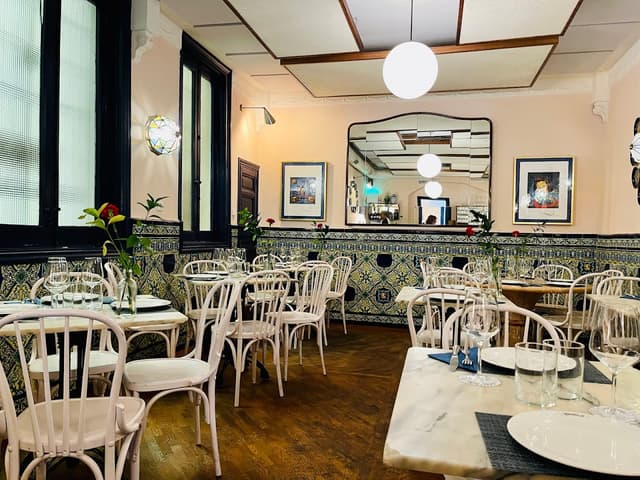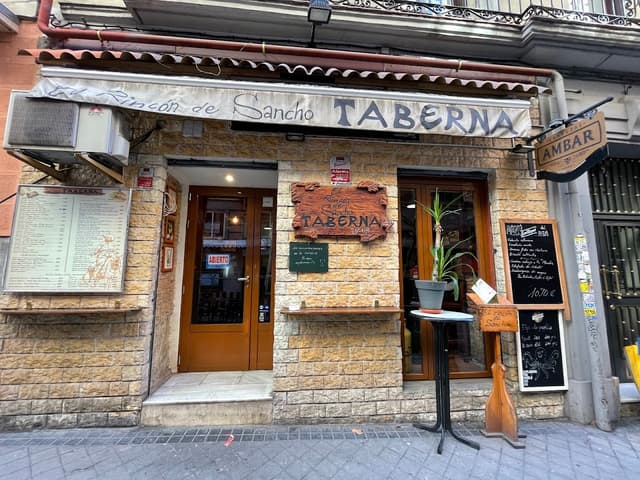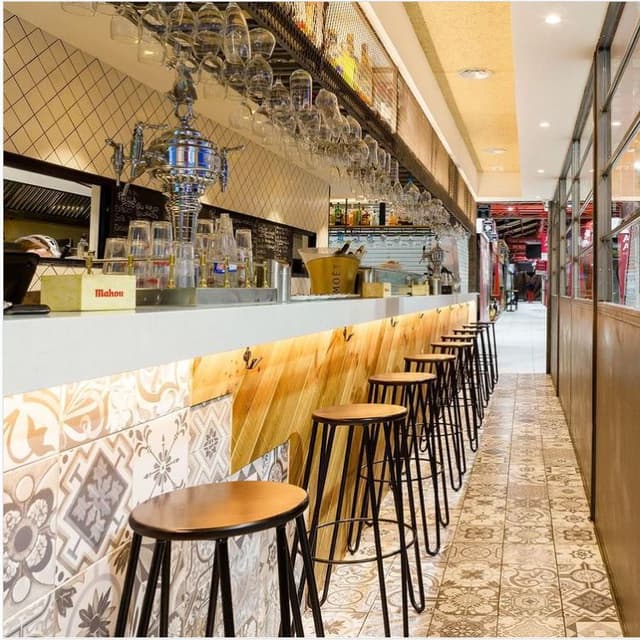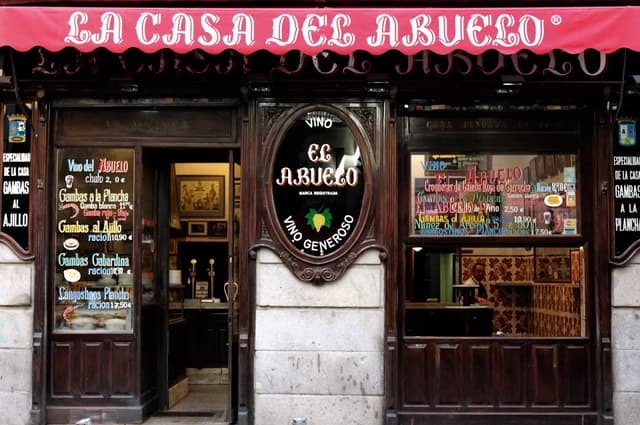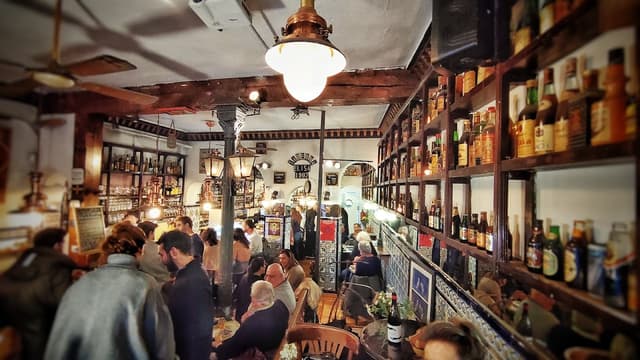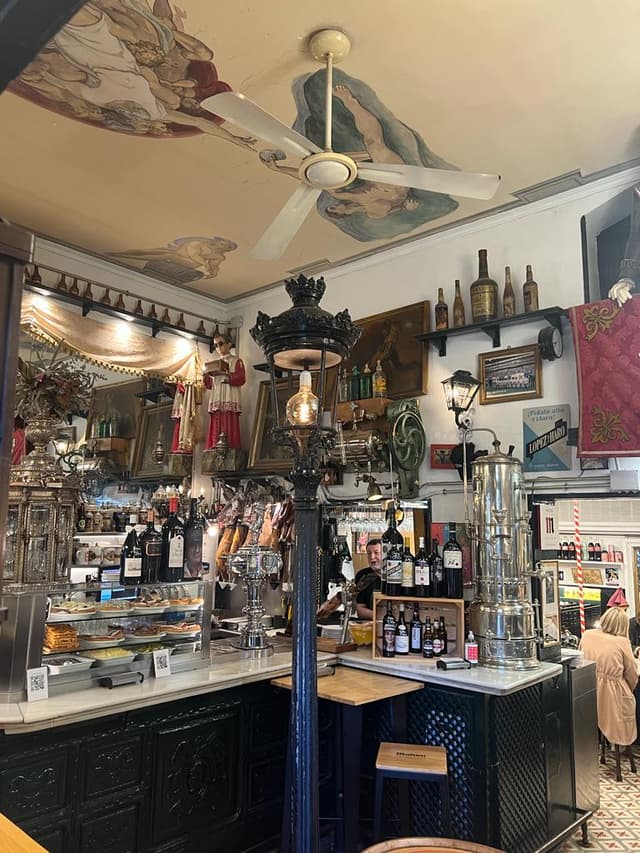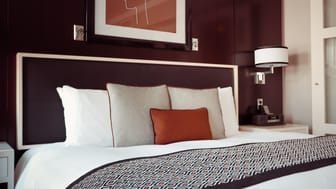About these Guides
This food guide is divided into two parts - this one, which is the informational section, and the first, separate guide, with the full map of all my restaurant recommendations. Because I want to prepare you to eat like a local in Spain, I've included a lot of context here, along with a few restaurant recommendations to illustrate a specific point.
However, once you get into the specifics of restaurant recommendations, you'll likely just want the list of recommendations, without needing to scroll past all this information every time. To get back to the full restaurant list, press back on your browser, head to your Library > Purchased or just click the link below.
How to Use It
I recommend you download the Thatch mobile app to be sure you have all these recommendations on your phone. Once you do that, you can 'favorite' any of my guides to add them to the homepage of the app - making them quick to access on the go when you are in Spain.
Additionally, you can start to build your own trip using my recommendations - add any of the places you find in this guide (or any of my others) to your own map by tapping the Add Place button.
It will ask you which guide you want to add the place to - you can make your own blank guide specifically for this trip and arrange it any way you want. You can also add your own hotel or other ideas into that new, blank guide alongside my recommendations.
Types of Eateries
Bar (Tapas Bar)
No such thing as a Tapas Bar
Effectively every bar in Spain is a tapas bar – regardless of what it says on the sign. We don’t say in Spanish, “Let’s go to a tapas bar.” We just say, “Let’s go to a bar.” Of course they’re going to serve tapas, because that’s how bars serve food. If a bar does have the word 'Tapas' in the name, it can often be the sign of a tourist trap 😱
How Tapas Work
Order a beer or a glass of wine and in most bars you’ll get something to nibble on, say a small plate of chorizo or cured manchego cheese. This is called the “tapa” or the “aperitivo”. It’s a gift from the bar, on the presumption that you need something to nibble on while you’re drinking.
Once you’ve had your drink and your free nibble, you might order another drink, and get another nibble. Or it might be time to order some food (or go elsewhere – there is no obligation to order food).
The food will usually be listed as raciones (larger plates to share), and you may not see the word tapas on the menu at all. A typical meal out with friends (say four of us) might mean ordering five raciones to share. Some places will let you order a half-sized raciones, or "medias raciones," so you can try more things. That's not always listed on the menu, but you can ask: “¿Hacéis medias raciones?”
Going out for tapas – or “tapear” in Spanish – is at its heart the very Spanish act of sharing plates of food with family or friends in a bar. And it implies the flexibility of being able to visit a place, order a few dishes and drinks, then move on to another place if you feel like it. So for me tapas is less about the dish, and more about the activity, the intention and the soul of what you’re doing.
Other Styles of Dishes at Bars
In Madrid you’ll also see bars serving things called “tostas”. These are slices of bread with savoury toppings. Order a variety and share. Taberna Tempranillo and Juana La Loca are two good tosta places (and El Capricho Extremeño if you’re at the Rastro on a Sunday).
Pinchos or pintxos are effectively the Basque name for tapas. Many people think of pinchos as things on bread, and some are. But many aren’t. I don’t know of any good pintxo bars in Madrid. Best to do that in the Basque Country,.
Keep learning...
Taberna
A “taberna” or tavern is pretty much a rustic tapas bar.
Bodega
“Bodega” in Spanish means winery or wine shop. So a bodega is a place that was once a wine shop (usually historically for selling wine in bulk to neighbours who would fill up their containers from the barrel) but has now converted into a tapas bar. Generally these places don’t have a full kitchen because they were originally designed as shops. So they’ll have cured meats, cheeses and pickled things.
Mesón
A “mesón”, from the French maison, will be a rustic and traditional joint that will likely have a sit-down/restaurant area.
Cafetería
Many tapas bars are only open for lunch and dinner, and thus only open from about 12-4pm, then 7-midnight. But if it’s called a “cafetería” that means it’ll be open all day – so it’s a place you can get breakfast, or your almuerzo or merienda (more on those below).
Restaurante
A “restaurante” or restaurant will be a place that will probably have slightly more formal service than the rough and tumble of a tapas bar.
Old Man Bars
A very special type of bar in Madrid (and Spain): bars that don’t change with the times, usually have retro decor, zinc-top bars, rustic wine, rustic food and... are frequented by old men (and younger people of all genders who enjoy old man bars). They’re a true reflection of the neighbourhood bar, and a truly wonderful slice of Spanish culture.
Meals
Breakfast
Most Madrileños have breakfast at home, but if one were to head out for breakfast, they would eat one of the following:
• Toast with jam (“tostada con mermelada”)
• Toast with fresh tomato and olive oil (sometimes with
jamón on top) (“tostada con tomate y jamón”)
• A sweet pastry (“un bollo”)
• Churros or porras dipped in chocolate or in coffee (porras
are the fatter – and in my opinion – yummier version of
churros).
Here are a few top recommendations for breakfast in *Central Madrid*
Chocolat Madrid
@spainrevealed
In my opinion the best churros and chocolate in Madrid. So if you’re pining for a traditional, soul-satisfying and a little bit greasy breakfast or afternoon tea, then this is your place. Small, homey and run by Alfonso. Unlike many bars, they make the churros and porras (the thicker kind and my favourite) on the premises, meaning they’re fresh and hot.

Details
La Mallorquina
@spainrevealed
A must-visit classic. This always-heaving, rough and ready pastry shop is true Madrid. Elbow your way to the counter and order either a napolitana de crema or napolitana de chocolate (their most famous pastry – a pastry filled with either pastry cream or chocolate). Down the far end you can grab a coffee and pastry (torrefacto alert!), and up the other end is where you get it to go. When you order it, say you want it “para tomar” – that means you’re going to eat it straight away and they’ll give you your pastry with a napkin. If you order it “para llevar” that means you’re taking it to eat later, and they’ll wrap it up in a cute little parcel with string. Just like the old days. I would skip going up to the dining room upstairs – it all gets a bit slow and expensive up there in my opinion. A great option for a quick breakfast à la Madrid, or afternoon pick me up.

Details
Plenti
@spainrevealed
Fantastic little café which does delicious baked egg dishes and toasts for very reasonable prices, and excellent coffee.

Details
Venta El Buscón
@spainrevealed
Try a tostada of tomato and jamón for breakfast here.

Details
El Riojano
@spainrevealed
Open since 1855 this gorgeous old Madrid pastelería is the real deal. While there you’ll likely come into contact with several members of the family – Esperanza runs the place, her husband sometimes works the till, her daughter is behind the counter and son Roberto is the pastry chef. Grab pastries to go from the front shop area, or head into the surprisingly large dining room out back, take a seat and order off the menu. This is a good option if you need to rest your tired legs, or feel like a classic Madrid breakfast sitting down. While they don’t do churros here, they do do some of the best chocolate in Madrid (many places make their warm chocolate with powder, but Roberto melts down actual chocolate).

Details
Almuerzo
If you want to grab a mid morning snack, it pretty much means hitting up a bar or cafeteria anytime from 10:30-12:00 for something to keep you going until lunch. It’s a good moment to grab a pincho de tortilla (i.e. slice of Spanish omelette) – that’s my favourite almuerzo.
Lunch
Lunch remains a meal that’s as important – if not more important – than dinner. In addition to having lunch at a tapas bar, where you can shares plates as you would in the evening, also plan to try at least 1 menú del día.
A menú del día is a fixed-price meal. Bars that have them usually advertise it outside with a chalkboard or simply a piece of paper stuck to the window listing the options. A typical menú del día costs €10-€14 and includes a starter, a main and dessert, and one drink. Typically only offered Monday - Friday, at lunch. This is a quicker option (designed for working people), and the courses come out fast. If you get fruit for dessert, don't be surprised if it's literally an apple or banana on a plate.
Restaurante Badila
@spainrevealed
Hands down my favourite menú del día in Madrid. I always take guests here. Home cooking, classic Spanish recipes, lots of choice, absolutely delicious. You can’t reserve for lunch, so ideally get there soon after opening at 1.30. They also open for dinner on Fridays and Saturday nights (making it a great dinner option as well) – you can reserve for those.

Details
La Esperanza
@spainrevealed
This bar opened a couple of years ago, and I love the way it walks the line between a hip, modern tapas joint, while also being popular with locals. The food isn’t super cheap, but generally it’s good. If you’re going to get something, make sure it’s the bravas, which are Barcelona-style (bravas sauce AND aioli) – they’re some of my favourites in the city. Also, their tortilla is pretty damn good and decently priced at 3 euros a big slice. They also do a great menú del día.

Details
La Sanabresa
@spainrevealed
When Yoly and I first moved to Madrid, she had a job where she would be paid part of her salary in “restaurant cheques” (vouchers you can use to buy lunch at restaurants). She would save them up and every now and again we would go for a big dinner at La Sanabresa. But La Sanabresa isn’t really a place for dinner. It’s more a place for a serious menú del día for lunch. I’m talking serious siesta-inducing rustic food. There may be a short queue at lunchtime, but it moves pretty quickly as the service here is really efficient.

Details
El Lacón
@spainrevealed
Hidden away in the streets off Plaza de Santa Ana, this mesón with a great big bar room is an institution. Come for reasonably-priced rustic dishes, and a pretty good selection of wines by the glass. And, the big draw for many people, is that with every drink you order, you get to choose your free tapa from a rotating list of 4 dishes that they’re constantly preparing behind the bar. You can also sit down in the dining room behind the bar, or in the white table clothed restaurants upstairs.

Details
Terramundi
@spainrevealed
These guys do rustic food from Galicia, and while I never head here for tapas or food generally, it is a good option for a filling and good quality menú in the area.

Details
Casa Macareno
@spainrevealed
First time I stumbled into this place a few years back it was an old school Madrid bar run by a husband and wife. They’ve since retired, and the new owners have updated the menu, but kept the gorgeous tiled decor and classic Madrid vibe. Food and wine are good. I generally just hang at the bar and order a few plates to share, but there is a sit-down area.

Details

Details
Casa Dani
@spainrevealed
This packed-to-the-gills market bar in the excellent Mercado de la Paz does the best tortilla in Madrid (and in Spain, according to the Second Annual Tortilla Championships held in the Canary Islands in early 2019). They also do a solid menú del día (but you came for the tortilla).

Details
Merienda
A mid-afternoon snack at about 6pm (to get you through to that late dinner!). People will sometimes have a pastry, or churros, or a pincho de tortilla or perhaps a bocadillo (sandwich). Swing into whatever bar or cafeteria you see that’s open about this time and they’ll have merienda options.
Aperitif
So this happens around 8pm or 9pm, and you’ll be drinking either a caña (small draft beer) or vermouth. More on both later. And you’ll nibble on the free tapa they give you, or maybe order a plate of something to share.
We don’t drink cocktails before dinner in Spain. So you’re not going to order a martini or a gin and tonic. The mixed drinks come after dinner...
Dinner
Bars and restaurants open late for the dinner shift – often around 8pm or even 9pm in some cases. And you’ll see locals sitting down at 11pm on a weekend for a meal.
I suggest you adjust as quickly as possible. After sightseeing, get into the habit of having a merienda and then a siesta. That way you’re more likely to be eating in a bar with Spaniards, and not falling asleep in your gazpacho at 11pm.
For dinner options, you’ll either want to eat tapas, or sit down in a restaurant. Hot tip: Spaniards never eat paella for dinner. It’s a lunch dish.
For an earlier dinner - on the first few days, or if you just can't adjust, try:
La Casa del Abuelo
@spainrevealed
Still in the same family since it opened in 1906, this place is home to one of Spain’s most famous tapas – gambas al ajillo, or garlic shrimp. They now have a few bars in and around these streets – the small, standing-room only one on Calle Victoria is the original and my favourite. This is where you can see them cook your shrimp right before your eyes. Like Casa Toni next door, in classic Madrid bars the “plancha” or flat-top grill was right behind the bar and in full view. Try pairing your shrimp with a “vino del abuelo” – a sweet wine in a small historic chato glass (this is how all wine was served in Madrid back in the day). Oh, and ask for your gambas with “extra de ajo” if you like them garlicky. Note: If you want a more sit- down experience, their place on Calle Nuñez de Arce also does good larger sharing plates.

Details
Taberna de la Elisa
@spainrevealed
Gorgeous old wood and tiled-lined Madrid tapas bar is run by the folks behind Triciclo (below), and is a temple to rustic Madrid cooking and tavern culture. It’s not cheap cheap, but the quality is very good with classic dishes given an ever so slight modern-twist. They have some good wines by the glass. See if you can find the small brass sign on the bar that says “Asiento reservado para caballeros mutilados”. It means this seat was once reserved for disabled gentlemen, probably as a result of some unnecessary war or another.

Details
Los Gatos
@spainrevealed
Surreal little bar that is worth a visit for the eye-popping decor (including a Naked Maja painted on one of the back walls).This would be a good bar to kick off your crawl, with a cold vermouth on tap, and a few tostas which is what they’re known for (they’re all in a cabinet on the bar, so you can just point).

Details
La Sobremesa
The “sobremesa” (literally “over the table”) is a wonderful Spanish tradition whereby after a sit-down lunch or dinner everyone sits around the table and talks for hours, usually while sipping on a gin and tonic or whisky and coke (or similar).
Other Helpful Guides
* * *
